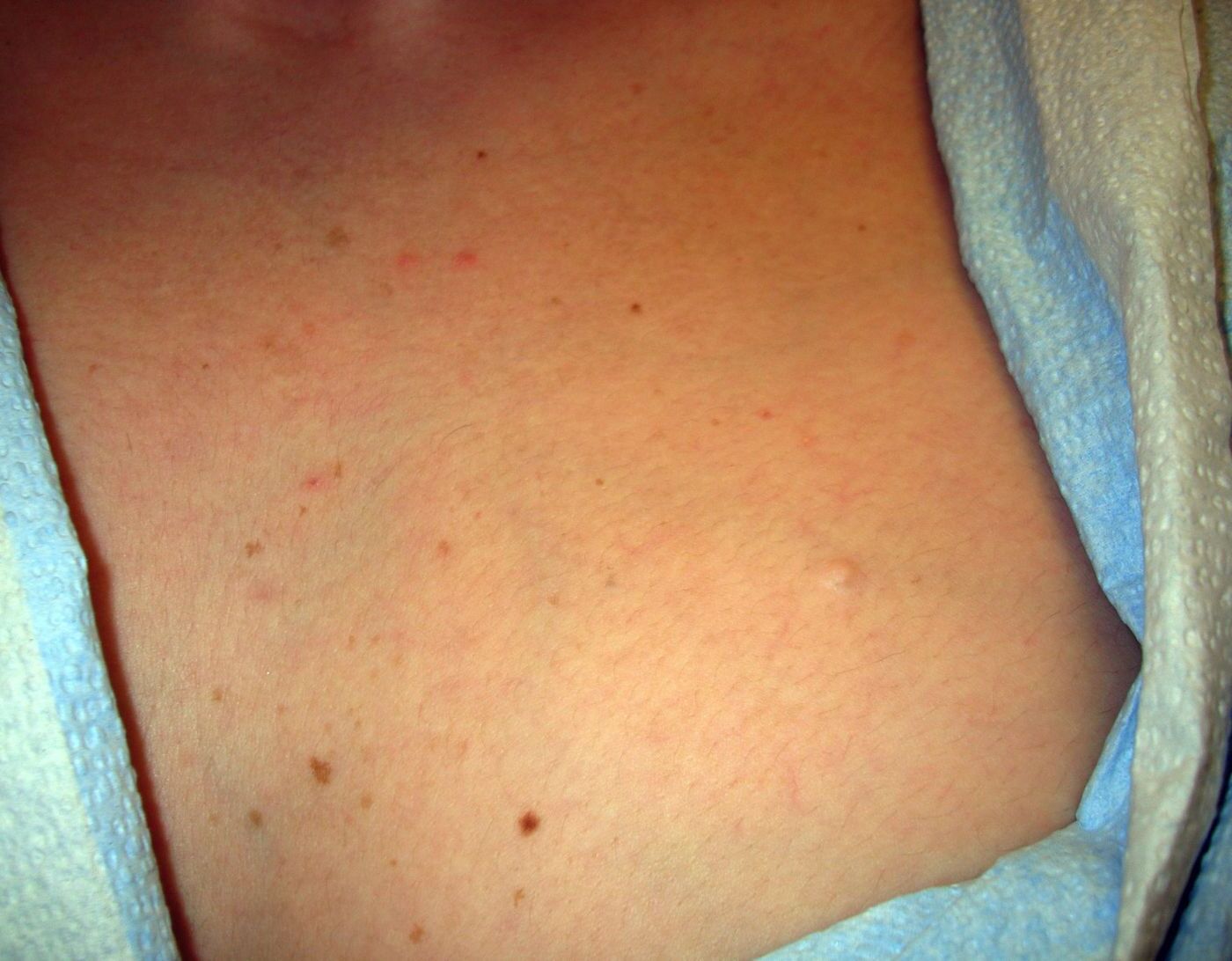
What is Multiple Endocrine Neoplasia Type 1 (MEN1)? MEN1 is a rare genetic disorder causing tumors in multiple endocrine glands. These glands include the parathyroid, pancreas, and pituitary. MEN1 results from mutations in the MEN1 gene, which encodes a protein called menin. Menin helps regulate cell growth and prevents tumors. Symptoms vary widely, often involving hypercalcemia, kidney stones, and bone issues. Tumors can also develop in the thymus, lungs, and stomach. Early detection and lifelong surveillance are crucial for managing MEN1. This condition affects both men and women equally, with a prevalence of about 1 in 20,000 to 1 in 40,000 people.
Key Takeaways:
- Multiple Endocrine Neoplasia Type 1 (MEN1) is a rare genetic disorder causing tumors in endocrine glands. It affects 1 in 20,000 to 1 in 40,000 people and requires lifelong surveillance for early detection and management.
- MEN1 can lead to a wide range of health issues, including tumors in various organs, financial burden, and impact on quality of life. Multidisciplinary care and genetic testing are essential for effective management.
What is Multiple Endocrine Neoplasia Type 1?
Multiple Endocrine Neoplasia Type 1 (MEN1) is a rare genetic disorder that causes tumors in multiple endocrine glands. This condition is due to mutations in the MEN1 gene, which encodes a protein called menin. Menin helps regulate cell growth and prevents tumor formation.
-
Definition: MEN1 is an autosomal dominant disorder, meaning a single copy of the mutated gene can cause the condition. It leads to tumors in the parathyroid glands, pancreas, and pituitary gland.
-
Prevalence: MEN1 affects about 1 in 20,000 to 1 in 40,000 people, making it a rare condition.
-
Gene Mutation: MEN1 results from inactivating mutations of the MEN1 tumor suppressor gene located at the 11q13 locus. Over 500 mutations of this gene have been identified.
Symptoms and Manifestations of MEN1
The symptoms of MEN1 vary widely depending on which endocrine glands are affected. Here are some common manifestations:
-
Symptoms: Common symptoms include hypercalcemia, nephrolithiasis, and bone abnormalities due to primary hyperparathyroidism.
-
Primary Hyperparathyroidism: This is the most common manifestation, occurring in about 90% of patients. It involves hyperplasia or adenoma of the parathyroid glands, leading to elevated serum parathyroid hormone levels and hypercalcemia.
-
Pancreatic Islet Cell Tumors: Patients with MEN1 are at high risk of developing pancreatic neuroendocrine tumors (PanNETs) and duodenal gastrinomas. These tumors can be functioning or non-functioning and may lead to various clinical manifestations.
-
Pituitary Gland Tumors: Anterior pituitary tumors are another common feature. These tumors can lead to hormonal imbalances depending on the type of hormone produced.
-
Other Tumors: Besides the main manifestations, patients are at higher risk for developing neuroendocrine tumors in the thymus, lungs, and stomach. They also have an increased risk of adrenal tumors and breast cancer in women.
Non-Endocrine Manifestations and Family History
MEN1 can also present with non-endocrine lesions and has a strong familial component.
-
Non-Endocrine Manifestations: Patients may develop non-endocrine lesions such as lipomas and subcutaneous tumors.
-
Family History: MEN1 can run in families. If one parent has the MEN1 gene variant, there is a 50% chance that each child will inherit it. However, some individuals may be the first in their family to have the condition.
Age and Gender Distribution
Understanding the demographics of MEN1 can help in early diagnosis and management.
-
Age of Onset: The age of onset can range from 4 to 81 years, but the peak incidence occurs in the 20s to 40s.
-
Gender Distribution: MEN1 affects men and women equally, with no gender predilection.
Clinical Guidelines and Surveillance
Proper guidelines and surveillance are crucial for managing MEN1 effectively.
-
Clinical Practice Guidelines: The first clinical practice guidelines for MEN1 were published in 2001 by Brandi et al. Updated guidelines were published in 2012 by Thakker et al.
-
Surveillance Program: An intensive lifelong surveillance program is recommended for individuals with MEN1. This program aims to detect tumors early, enabling timely interventions to prevent complications and metastases.
-
Early Detection: Early detection of tumors is crucial. The rationale for aggressive surveillance is based on the presumption that early pre-symptomatic detection of MEN1 neoplasias may reduce associated mortality.
Financial and Psychological Impact
Living with MEN1 can be financially and psychologically challenging.
-
Financial Burden: Individuals often report a high degree of financial burden, negative financial events, and unemployment. These factors are associated with worse health-related quality of life.
-
Psychological Impact: Persistent hypercalcemia after parathyroid surgery is associated with higher levels of anxiety, depression, fatigue, and decreased social functioning. Patients diagnosed at a younger age (<45 years) report worse physical and social functioning.
Mortality and Survival Rates
Understanding the mortality and survival rates can help in better management of MEN1.
-
Mortality Risk: Patients with untreated MEN1 have a decreased life expectancy, with a 50% probability of death by age 50 years. Half the deaths result directly from a malignant process or the sequela of an endocrine disorder.
-
Median Survival: The median survival in patients with an identified mutation in the MEN1 gene is estimated at 73 years, compared to 87 years in mutation-negative patients diagnosed on the basis of having two of the three main MEN1 manifestations.
-
Risk of Malignancy: Malignant pancreatic neuroendocrine tumors and thymic carcinoid tumors are associated with a marked increase in the risk of death.
Tumor Management and Genetic Testing
Effective management and genetic testing are essential for MEN1 patients.
-
Liver Metastases: The rate of liver metastases-free survival is significantly lower in patients with non-functioning tumors compared to those with insulinomas. Estimated 10-year rates are 63% versus 87%, respectively.
-
Tumor Removal: Tumors are removed surgically if they cause symptoms or for suspected malignancy based on size criteria. However, lesions are often multiple and/or difficult to find.
-
Hormone Management: Hormone excess can sometimes be managed by medications, but surgical intervention is often necessary to control symptoms and prevent complications.
-
Genetic Testing: Genetic testing of the MEN1 gene is recommended for patients with a family history of MEN1 or those presenting with tumors of the parathyroids, pancreas, and/or pituitary gland.
Clinical Evaluation and Family Screening
Regular clinical evaluations and family screenings are vital for early detection.
-
Clinical Evaluation: Patients should undergo clinical evaluation for other tumors associated with MEN1. This includes imaging tests and hormonal assessments to detect potential tumors early.
-
Family Screening: Family members of individuals with MEN1 are offered genetic screening to identify carriers of the mutated gene. This allows for early detection and management of the condition.
Age-Specific Manifestations and Long-Term Course
Different age groups may experience MEN1 differently, and understanding the long-term course is crucial.
-
Age-Specific Manifestations: Pediatric and young adult manifestations include a higher incidence of pancreatic islet cell tumors and pituitary adenomas. These manifestations can lead to significant morbidity and mortality if not managed appropriately.
-
Long-Term Natural Course: The long-term natural course of pituitary tumors in patients with MEN1 has been studied extensively. Results from the Dutch MEN1 Study Group indicate that these tumors can have a variable natural history, ranging from benign to malignant.
Non-Endocrine Manifestations and Breast Cancer Risk
Besides endocrine tumors, MEN1 can lead to other health issues.
-
Non-Endocrine Manifestations: Patients may develop non-endocrine manifestations such as breast cancer in women. The International Breast Cancer in MEN1 Study Group has highlighted the increased risk of breast cancer in this population.
-
Breast Cancer Risk: Women with MEN1 have a higher risk of developing breast cancer compared to the general population. This risk is attributed to the genetic predisposition associated with the MEN1 mutation.
-
Lipomas and Subcutaneous Tumors: Patients are also at risk for developing lipomas and subcutaneous tumors. These lesions are part of the non-endocrine manifestations associated with this condition.
Thymic and Lung Neuroendocrine Tumors
MEN1 can also lead to neuroendocrine tumors in the thymus and lungs.
-
Thymic Carcinoid Tumors: Thymic carcinoid tumors are another type of neuroendocrine tumor that can occur in patients with MEN1. These tumors are associated with a higher risk of death and require aggressive management.
-
Lung Neuroendocrine Tumors: Patients are also at risk for developing neuroendocrine tumors in the lungs. These tumors can be challenging to manage and often require a multidisciplinary approach.
Stomach and Adrenal Tumors
MEN1 can affect the stomach and adrenal glands as well.
-
Stomach Neuroendocrine Tumors: Stomach neuroendocrine tumors can also occur in patients with MEN1. These tumors can lead to significant gastrointestinal symptoms and require prompt diagnosis and treatment.
-
Adrenal Tumors: Adrenal tumors are another type of tumor that can occur in patients with MEN1. These tumors can be functioning or non-functioning and may lead to various clinical manifestations.
Managing Hypercalcemia and Nephrolithiasis
Hypercalcemia and nephrolithiasis are significant challenges in MEN1 management.
-
Hypercalcemia Management: Persistent hypercalcemia after parathyroid surgery is a significant challenge. This condition can lead to various complications, including nephrolithiasis and bone abnormalities.
-
Nephrolithiasis Risk: Patients are at an increased risk of developing nephrolithiasis due to hypercalcemia. This risk is further exacerbated by the high recurrence rate of hypercalcemia after parathyroidectomy.
Bone Abnormalities and Quality of Life
Bone health and quality of life are important considerations for MEN1 patients.
-
Bone Abnormalities: Bone abnormalities such as osteitis fibrosa cystica can occur due to prolonged hypercalcemia. These abnormalities can lead to significant morbidity and require aggressive management.
-
Quality of Life Impact: The diagnosis and management of MEN1 can significantly impact the quality of life for affected individuals. Persistent symptoms and complications can lead to anxiety, depression, and fatigue, affecting overall well-being.
Multidisciplinary Care
Effective management of MEN1 requires a team approach.
- Multidisciplinary Care: The management of MEN1 requires a multidisciplinary approach involving endocrinologists, surgeons, radiologists, and other healthcare professionals. Early detection and timely interventions are crucial in improving outcomes and reducing mortality associated with this condition.
Understanding MEN1: A Lifelong Journey
Multiple Endocrine Neoplasia Type 1 (MEN1) is a rare genetic disorder that demands attention and care. With tumors affecting the parathyroid glands, pancreas, and pituitary gland, early detection and aggressive surveillance are crucial. This condition, caused by mutations in the MEN1 gene, can lead to a variety of symptoms and complications, impacting the quality of life. Regular check-ups, genetic testing, and a multidisciplinary approach are essential for managing MEN1 effectively. Despite the challenges, understanding the risks and manifestations can help patients and their families navigate this complex condition. Awareness and proactive management can significantly improve outcomes, making a world of difference for those affected by MEN1.
Frequently Asked Questions
Was this page helpful?
Our commitment to delivering trustworthy and engaging content is at the heart of what we do. Each fact on our site is contributed by real users like you, bringing a wealth of diverse insights and information. To ensure the highest standards of accuracy and reliability, our dedicated editors meticulously review each submission. This process guarantees that the facts we share are not only fascinating but also credible. Trust in our commitment to quality and authenticity as you explore and learn with us.


